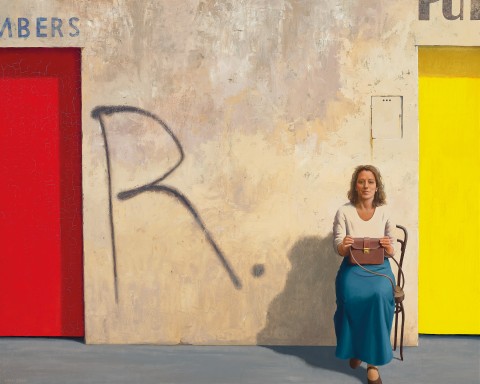PORTRAIT OF GERMAINE GREER, 1984
JEFFREY SMART
oil and synthetic polymer paint on canvas
96.0 x 120.0 cm
signed lower left: JEFFREY SMART
Rex Irwin Art Dealer, Sydney (label attached verso)
Joan Clemenger AO and Peter Clemenger AO, Melbourne, acquired from the above in November 1984
Jeffrey Smart: Recent Paintings, Rex Irwin Art Dealer, Sydney, 6 – 24 November 1984, cat. 10
Jeffrey Smart, Australian Galleries, Melbourne, 21 April – 12 May 1986, cat. 1
The Jack Manton Exhibition 1989: recent works by twelve Australian artists, Queensland Art Gallery, Brisbane, 12 July – 27 August 1989 (label attached verso)
About Face: Aspects of Australian Portraiture c.1770 – 1993, National Portrait Gallery, Old Parliament House, Canberra, 31 March – 14 August 1994
Jeffrey Smart Retrospective, Art Gallery of New South Wales, Sydney, 27 August 1999 – 6 August 2000, cat. 44, and touring to the Art Gallery of South Australia, Adelaide; Queensland Art Gallery, Brisbane; Heide Museum of Modern Art, Melbourne (label attached verso)
Jeffrey Smart: The Question of Portraiture, Mornington Peninsula Regional Gallery, Victoria, 4 March – 13 April 2009, cat. 51
Jeffrey Smart, National Gallery of Australia, Canberra, 11 December 2021 – 15 May 2022
Johnston, S., ‘Living in the pasta’, Tatler, London, September 1984, vol. 279, no. 8, p. 142
O’Grady, D., ’The Smart perspective’, The Age, Melbourne, 19 October 1984, p. 11 (illus.)
O’Grady, D., 'Smart Art in from Italy’, The Sydney Morning Herald, Sydney, 27 October 1984, p. 44
Lynn, E., ‘Rich content but what does it mean?’, The Weekend Australian Magazine, 17 – 18 November 1984, p. 16
Smith, M., ‘Moved by man’s violent environment’, The Bulletin with Newsweek, Sydney, vol. 106, no. 5444, 27 November 1984, pp. 88, 89 (illus.)
Quartermaine, P., ‘Jeffrey Smart’s Brave New World’, Art and Australia, Fine Arts Press, Sydney, vol. 23, no. 1, Spring 1985, pp. 65, 66 (illus.)
Beeby, R., ‘Kicked off by the light’, The Age, Melbourne, 29 April 1986, p. 14
Harris, S., 'Smart Work – Expatriate having the last Laugh’, The Advertiser, Adelaide, May 1986, pp. 16 – 17 (illus.)
Shmith, M., ’Taking pleasure in being Smart’, The Age, Melbourne, 3 October 1987, p. 12
Hogan, J., The Jack Manton Exhibition 1989: recent works by twelve Australian artists, Queensland Art Gallery, Brisbane, 1989, pp. 25 (illus.), 26
McDonald, J., Jeffrey Smart. Paintings of the 70s and 80s, Craftsman House, Sydney, 1990, cat. 280, pl. 34, pp. 37, 122, 123 (illus.), 155, 161
Loxley, A., and Horton, W., About Face: Aspects of Australian Portraiture c.1770 – 1993, National Portrait Gallery, Old Parliament House, Canberra, 1994 (illus. front cover)
Grishin, S., ‘Lovely, subversive show for first Portrait Gallery’, The Canberra Times, Canberra, 9 April 1994, p. 47
Capon, E., Jeffrey Smart Retrospective, Art Gallery of New South Wales, Sydney, 1999, cat. 68, pp. 166 (illus.), 211
Hawley, J., ‘Who’s that man?’, Sydney Morning Herald, Sydney, 7 August 1999, pp. 16 – 21 (illus.)
McKew, M., ‘Lunch with Maxine McKew’, The Bulletin, Sydney, 7 September 1999, pp. 54 – 56
Capon, E., Jeffrey Smart Drawings and Studies 1942 – 2001, Australian Art Publishing, Melbourne, 2001, pp. 122 – 123 (illus.)
Pearce, B., Jeffrey Smart, The Beagle Press, Sydney, 2005, pl. 179, pp. 178, 179 (illus.), 232 (illus.)
James, R., Jeffrey Smart: The Question of Portraiture, Mornington Peninsula Regional Gallery, Victoria, 2009, pp. 17, 18 (illus.), 19
Blackhouse, M., ‘Animate Objects’, The Age, Melbourne, 28 February 2009, pp. 2 (illus.), 12, 13
Allen, C., ‘About Face’, The Australian, Sydney, 21 March 2009, pp. 18 – 19
Hart, D., and Edwards, R., Jeffrey Smart, National Gallery of Australia, Canberra, 2021, pp. 113 (illus.), 128, 163
Drawing I for Portrait of Germaine Greer, 1984, pencil and watercolour on paper, 23.0 x 17.5 cm, private collection
Drawing II for Portrait of Germaine Greer, 1984, pencil and watercolour on paper, 17.5 x 23.0 cm, private collection
Head study 1984 for Portrait of Germaine Greer, 1984, pencil on paper, 17.5 x 23.0 cm, private collection
Study for Portrait of Germaine Greer (with stand–in), 1984, synthetic polymer paint and oil on Fabriano paper, 37.5 x 46.5 cm, in the collection of R. Corporation, Melbourne
We are grateful to Stephen Rogers and Ermes De Zan for their invaluable assistance with this catalogue entry.
1 smart.jpg
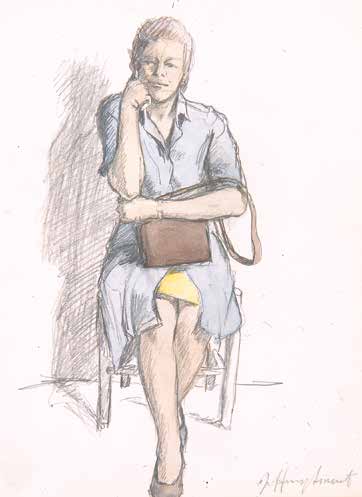
Germaine Greer, 1984
It is a testimony to the public perception of Germaine Greer that viewers are surprised Jeffrey Smart has made her seem so prim, so demure. Surely, the outspoken author of The Female Eunuch (1970) should be shown making some provocative gesture, staring challengingly at the viewer. Instead, Smart has portrayed the 45-year-old Greer sitting stiffly on a chair, as if posing for a snapshot. She wears a long blue skirt and an equally conservative top. She clutches her leather handbag with both hands. She seems mildly amused to find herself in this predicament.
The most provocative feature of the painting is the large letter ‘R.’ spray-painted on the wall behind the sitter. Because it takes up more space in the picture than Greer herself, one might imagine there is some hidden meaning. If so, it’s likely to remain concealed for all eternity, as Smart repeatedly told interviewers that the R. was merely ‘a lovely bit of graffiti’ he saw on a wall and sketched for future reference. He also recounted how the filmmaker, Bruce Beresford, believed the R. stood for ‘ratbag’, although the charge was firmly denied.1
It was typical of Smart to create a distraction or a puzzle within a painting that might never be resolved. His usual tactic, when asked to explain the significance of a motif was to say it was all a matter of scale, or something the picture ‘required.’ Although he was a figurative painter, Smart continually drew attention to the formal or abstract elements within a composition. It was, one suspects, a way of combatting the idea that abstract art was somehow more advanced or progressive. Smart’s paintings, although filled with distinct, recognisable forms, could be as mysterious as any self-conscious abstraction.
1 smarty.jpg
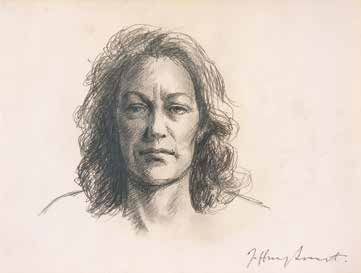
Germaine Greer, 1984
This extended even to the portraits, a small but important body of work that has begun to attract a surprising amount of attention. Smart’s archivist, Stephen Rogers, lists three distinct varieties.2
Firstly, the self-portraits, which came along every five to ten years, as Smart monitored his aging visage, perhaps taking his cue from fearless self-portraitists such as Rembrandt, or even Fred Williams, who once said ‘if you can’t paint a portrait then your art is in trouble.’3 It’s the kind of thing that serious artists do.
Next came the ‘named’ portraits, beginning with David Malouf in 1980, followed by Germaine Greer (1984), then Margaret Olley (1994), Clive James (1991 – 92), Ermes de Zan (2006) and Bruce Beresford (2009). Both Malouf and Greer were neighbours in Tuscany when Smart painted their portraits. The Olley and James portraits caused him a good deal of time and effort, requiring numerous sketches and oil studies. None of these paintings are simple ‘head and shoulder’ studies. In each instance Smart tried to include the subject within a carefully thought-out composition.
Finally, there were the ‘unnamed’ portraits, in which actual people were included anonymously in more typical paintings. Smart’s long-term partner, Ermes De Zan, appears again and again, and the artist himself enjoys an occasional sneaky cameo, notably in Morning, Yarragon Siding, 1983 – 84 (formerly in the Holmes à Court collection, Perth), hiding behind a newspaper. Although he would paint – and identify – famous people, such as Giorgio Morandi or Alma Mahler, Smart also included many unidentified images of celebrities copied from newspapers or magazines. According to Stephen Rogers, the list includes Charles De Gaulle, Queen Elizabeth II, Pablo Picasso and even Marilyn Monroe.
1 smart3.jpg
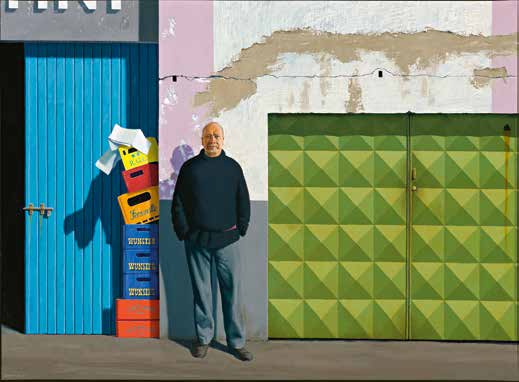
Smart was not a natural portraitist and admitted he often had difficulty getting a likeness. He believed it was a gift certain artists possessed. Even some ‘quite bad artists’4 had the knack of capturing a striking likeness, but for him it was always a struggle. He tells us Germaine Greer said the portrait ‘was not in the least like her,’5 but that’s debatable. The uptight body language may be the most controversial aspect because Greer is the kind of personality who never takes a backward step, showing little concern as to who she might offend. The woman in this picture who sits with arms and legs pressed together, holding her handbag as if it were a life preserver, is not that self-confident, abrasive character.
In the book, Jeffrey Smart: Drawings and Studies 1942 – 2001 (2001), Smart provides an engaging commentary on three drawings associated with the portrait. After he had finished a pencil study of Greer’s face, she was unwilling to spend any further time posing, so Smart used a friend as a body double.
‘Rosemary Roche, from Rome, was an agreeable and compliant model…’ he writes, ‘Germaine was not a particularly co-operative model when she initially posed. Perhaps she thought modelling was a waste of her time. She forcibly complained when she saw the finished painting, that she never used a handbag and never sat with her knees together.’6
When Greer complained the work was not like her, Smart says that he told her: ‘it will be soon’, self-consciously echoing Picasso’s famous comment about his Portrait of Gertrude Stein, 1905 – 06 (Metropolitan Museum of Art, New York).7
To be precise, these are Picasso’s words, as recalled by Stein in The Autobiography of Alice B. Toklas (1933): ‘everybody says that she does not look like it but that does not make any difference, she will, he said.’8
Although Smart’s reminiscence sounds suspiciously like an example of l‘esprit de l’escalier, anyone who knew him would agree this is exactly the kind of thing he would say.
1 smart4.jpg
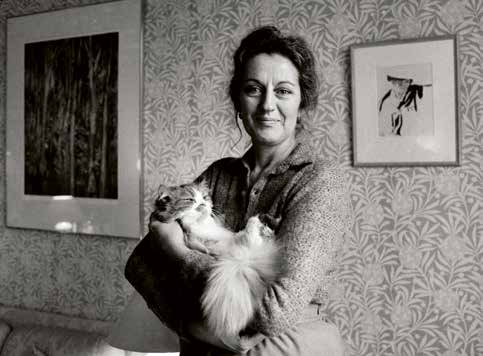
Greer would not be the only sitter Smart quietly cut down to size. Clive James came in for even more drastic treatment in a portrait in which he is roughly the size of a mouse – a monumental putdown for such a massive ego. One major difference was that James pursued Smart to paint his portrait, whereas Greer was indifferent to the idea. Had the artist followed his first instincts Clive might have fared even worse, being immortalised as a dirty old man in an overcoat waiting at a bus stop. In comparison, to echo the economist, E.F. Schumacher, small is beautiful.
Nevertheless, Smart would deny any critical intentions with his portraits of either James or Greer. On the contrary, he insisted that Greer’s small essay from 1983 was his favourite piece of writing devoted to his work. In his autobiography, Not Quite Straight (1996), he describes her as ‘beautiful, intelligent, and wonderfully vivacious.’9
In the early 1980s, Smart and Greer were very close. They dined at each other’s Tuscan homes and mixed in the same circles. They even travelled to Australia together, when Greer was given two first-class air tickets, and asked Smart if he’d like to accompany her. It may have been on that trip, or the one after, that Smart noticed the wall that appears in the Greer portrait. Believe it or not, it belongs to the Members’ Pavilion at the Melbourne Cricket Ground! This helps decode the word half glimpsed at the top left on the picture and leaves us dumbstruck that Germaine Greer and ‘members’ should appear in the same painting.
Why did Smart paint Greer holding a handbag she swears she never possessed? Was he playfully portraying her as a middle-aged bourgeoise? Adding a stereotypical ‘feminine’ touch to a feminist icon?
It’s conceivable that Smart was implying Greer’s self-confidence might be only skin-deep, but if there’s a gentle whiff of satire, it was not the primary motivation behind the portrait. Ermes De Zan recalls that Smart began with the idea for a composition, then said that he needed a figure. Greer was at hand and was duly asked to pose. In time, Smart would become more conscious of the exaggerated status enjoyed by portraits, but it’s a peculiar fact that he viewed his sitters primarily as objects rather than personalities.10
1 smart5.jpg
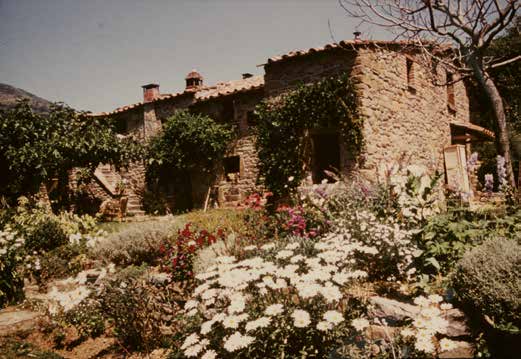
This is so different from everything we stereotypically look for in a portrait that it sounds brutal, almost heretical. We think of a successful portrait as a likeness that reveals something fundamental about the sitter, providing a window onto their soul. But Smart was less concerned with the inner life of his subjects than the way they might strike an equilibrium with other elements in the painting. His subjects were objects. ‘You don’t just put a face on canvas,’ he told journalist, Desmond O’Grady in 1984, ‘you make a design.’11
Of all Smart’s ‘named’ portraits, David Malouf believes the Germaine Greer picture comes closest to capturing a sense of the sitter’s personality.12 It may require the insight of one intimately acquainted with both parties to make this distinction (at least one contemporary reviewer felt that Greer’s eyes betrayed ‘an obvious vulnerability’13), but there can be no doubt about Greer’s objecthood within the composition. Her blue dress forms part of sequence of primary colours between two doors painted in dazzling tones of red and yellow. These colours are irresistibly suggestive of Mondrian.
Greer’s white blouse quite literally blends in with the creamy-white wall, as Smart has artfully declined to provide a contour for her left shoulder (a touch of finesse he loved to point out). The thin-framed wooden chair rhymes with the graffitied R., while the strip of grey across the bottom of the picture heightens the impact of the colours in the same way that a mauve-grey sky, or a strip of asphalt, might add intensity to the reds and yellows of an urban landscape.
Smart was so pleased with the painting that, according to De Zan, it inspired Self-Portrait at Papini’s, 1984 – 85 (private collection), in which the artist stands against a wall, between blue and green doors.14 Both paintings would be acquired by the same prescient collector, from successive exhibitions. When Australia’s new National Portrait Gallery was opened in the old Parliament House, Canberra, on 31 March 1994, the Portrait of Germaine Greer, 1984 which had been borrowed for the occasion, would feature on the cover of the catalogue.
One of the strangest stories attached to the portrait comes from January 2000, when Smart received a long, handwritten letter from a 19-year-old student in Bath, who had undertaken an elaborate analysis of the painting from a postcard. Not feeling inclined to respond to this lengthy, misguided hypothesis, he passed the letter on to Stephen Rogers, who replied on his behalf.15 Another letter followed, wondering whether the portrait might have been painted in Ethiopia, where Greer had recently visited.
Within a month, this same student had turned up at Greer’s home on Essex, was initially invited in, but became ‘troublesome’ and had to be removed by the police. The next day she returned and launched a full-scale assault on Greer that resulted in the writer being held captive for hours in her own home. The portrait, to which the stalker had attributed all kinds of mystical significance, had acted as a catalyst for this incident. It’s a bizarre reminder of the power of images, even such sedate, carefully composed ones as those produced by Jeffrey Smart.16
A more reassuring association might be with the Italian Renaissance masters that Smart admired. The ‘stillness’ he found in Piero della Francesca was the guiding principle for his own work. Like Piero, Uccello, and their peers, Smart built his paintings upon a rigorous, underlying geometry. It’s this precise structure that gives his pictures a sense of underlying ‘rightness’ that may be felt by viewers who have no inclination for analysing the planes and angles. For such viewers the major reference to the Renaissance to be found in this portrait is that Smart has invested the fearsome Germaine Greer with the smile of the Mona Lisa.
1. McKew, M., ‘Lunch with Maxine McKew: Jeffrey Smart’, The Bulletin, 7 September 1999
2. Stephen Rogers, email correspondence with the author, 4 July 2022
3. Lyn Williams, in conversation with the author.
4. Interview with the author, in preparation for the documentary, Smart’s Labyrinth (1994). Not published.
5. Ibid.
6. Smart, J. et al., Jeffrey Smart: Drawings and Studies 1942 – 2001, Australian Galleries, Melbourne, 2001, p. 122
7. Ibid.
8. Stein, G., The Autobiography of Alice B. Toklas, 1933, chapter 2.
9. Smart, J., Not Quite Straight. A Memoir, Random House, 1996, p. 420
10. Ermes De Zan, in conversation with the author
11. O’Grady, D., ‘Smart art – in from Italy’, Sydney Morning Herald, 7 October 1984, p. 44
12. De Zan op. cit.
13. Margaret Smith, ‘Moved by man’s violent environment’, The Bulletin, 27 November 1984
14. De Zan, op. cit.
15. Stephen Rogers, in conversation with the author.
16. http://www.fact.on.ca/news/news0004/np000427.htm
JOHN MCDONALD
John McDonald is art critic for the Sydney Morning Herald and film critic for the Australian Financial Review. He is also the author of Jeffrey Smart: Paintings of the ’70s and ’80s, Craftsman House, 1990.
www.johnmcdonald.net.au
